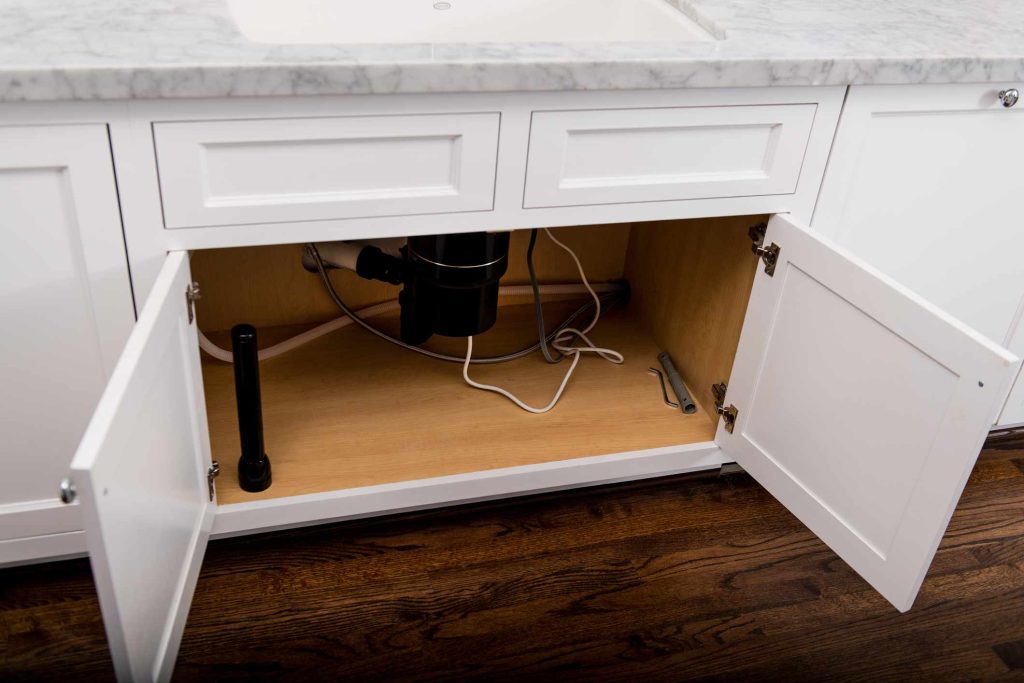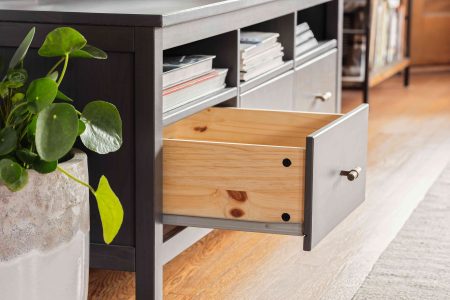There are several reasons you might need to permanently remove a garbage disposal from your kitchen sink. Having a septic system, or experiencing issues with clogged drains, are the most common reasons.
Garbage disposals are not recommended for homes with septic systems. If you’ve had problems with a septic system, or you’ve moved into a home that has a septic system, it might be a good idea to remove the disposal. Similarly, kitchen drains that are prone to clogging may be challenged by a garbage disposal; it sends little bits of food down the drain, which might make clogging even more likely. In that case, it’s safer to scrape off all food scraps into the compost or trash to keep your drains clear.
Fortunately, removing a garbage disposal and installing a sink strainer in its place is a job most homeowners can handle on their own.
Before You Begin
When you remove a garbage disposal without replacing it with a new one, you must install a new sink strainer, or basket strainer, in its place. You’ll also need a new sink tailpiece, the vertical drain pipe directly below the strainer. In addition, you will likely need a new continuous waste pipe that extends from the tailpiece to the drain’s P-trap or a tee (for double-basin sinks).
All of these parts are commonly available at home centers. They are inexpensive and easy to work with. If you have trouble fitting any of the new drain parts with the old, it costs very little to replace all of the drain parts leading to the branch drain in the wall or floor.
Warning
If your garbage disposal does not have an appliance cord plugged into an outlet, it is hard-wired and must be disconnected from the circuit wiring. Shut off the power to the disposal circuit at the circuit breaker before working on any wires. Consult an electrician about permanently disconnecting the disposal portion of the circuit.
What You’ll Need
Equipment / Tools
- Bucket
- Channel-type pliers
- Screwdrivers
- Rag
- Hacksaw
Materials
- Plumber’s putty
- Basket strainer
- Sink tailpiece
- Continuous waste pipe
Instructions
-
Disconnect the Garbage Disposal
Unplug the garbage disposal from the wall outlet.
Place a bucket or other container under the drain trap to catch the water that drains from the pipes. Use pliers to loosen the slip nut at each end of the trap bend. Unthread the nuts and pull the trap straight down to remove it.
Loosen the slip nuts and remove the continuous waste pipe and the tee that connects to the discharge pipe of the disposal.
-
Disconnect the Dishwasher if Needed
If you have a dishwasher, it is most likely connected to the garbage disposal. To remove the dishwasher drain hose, squeeze its hose clamp with pliers and shift it off of the hose end. If the clamp has a screw drive, loosen it with a screwdriver and slip off the clamp. Grip the hose by hand, and rotate it back and forth as you pull it off of the disposal nipple.
-
Remove the Disposal Unit
Support the bottom of the disposal with one hand, or have a helper support it. Insert a screwdriver shaft into one of the ears on the lower mounting ring of the disposal, and turn it 1/4 turn counterclockwise to release the disposal from the mounting assembly. The disposal will come straight down so be ready to catch it.
What is left is the mounting assembly. To remove it, loosen and remove the screws between the upper and lower mounting rings. Take off the lower ring.
Use a flat screwdriver to pop the snap ring off of the cylinder of the sink flange that fits down through the sink hole. Slide the triangular backup flange from the sink flange, followed by the fiber gasket. Push up on the sink flange to break its seal with the sink, then lift the flange out from the top side of the sink.
Clean around the sink opening with a rag to remove gunk and old plumber’s putty.
-
Install the Basket Strainer
Apply a ring of plumber’s putty under the lip of the new basket strainer flange. Fit the strainer into the sink opening and make sure it is centered.
Under the sink, place the rubber washer onto the strainer flange, followed by the bottom mounting cup, then thread on the mounting nut. Using pliers, tighten the mounting nut until it is firm.
Remove the excess putty that oozes out from the strainer lip, on the top side of the sink.
-
Attach the Drain Tailpiece
Fit the new drain tailpiece onto the bottom end of the strainer basket, and secure it with the provided washer and slip nut. Tighten the nut with pliers.
If you have a dishwasher, you need to use a flanged branch tailpiece, which has an additional inlet for the dishwasher drain hose. Fit the drain hose onto the tailpiece inlet, and secure it with the hose clamp.
For some extra protection against leaks, place a few pinches of putty inside the nut between the tailpiece washer and basket strainer.
-
Install the Continuous Waste Pipe
Mark the continuous waste pipe for cutting to size by placing the elbow end of the pipe onto the tailpiece and marking where the other end (the straight end) will go into the tee on the drain assembly. Cut the pipe to length with a hacksaw. Fit the continuous waste pipe into place and secure it with slip nuts.
-
Reassemble the Trap
Reassemble the trap and trap arm, securing the joints with slip nuts. Double-check all of the connections.
Fill up each sink basin, then let it drain while you watch the pipe connections for leaks. Tighten any leaky joints with pliers, but be careful not to overtighten and damage the nut.
Read the full article here









